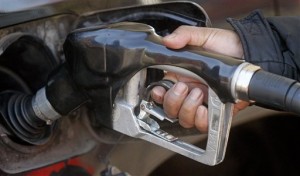Diesel prices up, gasoline down
MANILA, Philippines—Oil firms are likely to raise the pump prices of diesel products, but lower the prices of gasoline this week to reflect international price movements, industry sources said Monday.
The price adjustments will likely be less than 50 centavos per liter, sources said. According to sources’ estimates, there may be 20 to 25 centavos per liter price hikes for diesel and 45 to 50 centavos per liter price cuts for gasoline starting Tuesday. Kerosene may be up 25 centavos per liter.
Without including the price forecasts for this week, the year-to-date net increase for gasoline has been reduced to P1.85 per liter, while diesel remained at P2.33/liter. There has been a net decrease in LPG of P4.75 per kilogram.
On Aug. 6, oil companies rolled back gasoline prices by 35 centavos and increased kerosene prices by 25 centavos per liter. No adjustment was implemented on diesel. For LPG, an increase of P1.55/kg (VAT exclusive) was implemented on Aug. 1 due to the increase in contract price for August by $28.50/metric ton to $820/MT from $791.50/MT in July.
The price changes reflect movements in the international oil markets and foreign exchange, the oil companies said.
The country imports about 90 percent of its fuel requirements. As such, oil firms operating in the Philippines tend to track each other’s price movements.
Since the Philippine market is very small compared to the total oil trade worldwide, anything from foreign exchange movements to political developments and global price speculation still greatly influence local prices.
Speculation on prices due to volatile political developments in the oil producing and/or transporting regions in the Middle East and North Africa, economic developments and the oil consumption of the world’s top two consumers (United States and China), and demand from other industrialized markets such as Japan, all influence oil prices in the world market.
According to the Department of Energy’s latest Oil Monitor report, Dubai crude was relatively stable in late July to early August, trading between $104 to $105 a barrel, but better than expected manufacturing data in the United States and China signified increased demand by the world’s two largest oil consumers.
“In the US, the Federal Reserve showed its continued economic support by offering no signs to curb its bond-buying stimulus at its next meeting in September. Another reason that relatively provided support to prices was the eurozone’s manufacturing sector that grew in July for the first time in two years. It is the latest signal that the economy of the 17-nation eurozone has begun to stabilize at low levels after 18 months of recession,” the DOE’s Oil Monitor said.
Dubai crude also leaped on the back of continued political turmoil in Yemen and Libya, halting the flow of crude.


